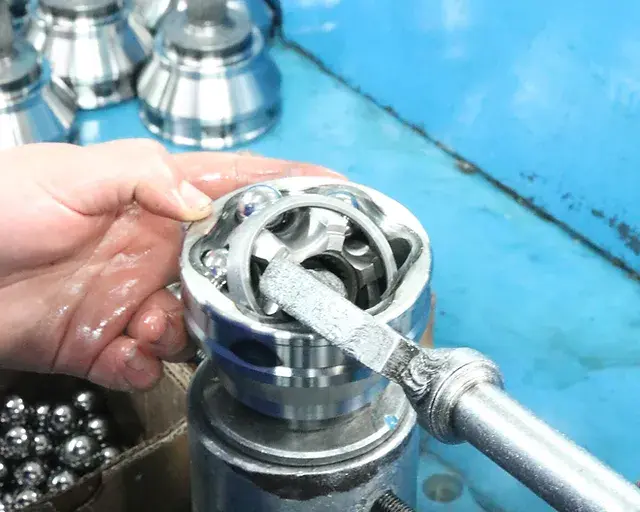How CV Axles Work
- Ziad Halabi
- Mar 29, 2023
- 3 min read
Updated: Aug 17, 2023
CV axles, also known as constant velocity axles, play a crucial role in the function of many vehicles. These axles transfer power from the transmission to the wheels while allowing for smooth and consistent movement, even during turns or changes in terrain. In this blog, we will explore the ins and outs of how CV axles work in a vehicle.

What Is A CV axle?
A CV axle is a drivetrain component that connects the transmission to the wheels of a vehicle. Its primary function is to transfer rotational power from the engine to the wheels, but it also allows for a range of motion necessary for the wheels to turn and move up and down with changes in terrain. The CV axle consists of a shaft with two flexible joints on either end called the inner and outer CV joints.
The inner joint is connected to the transmission, while the outer joint is connected to the wheel hub. The CV axle is protected by a rubber or plastic boot that covers the joints and removes dirt and debris. This boot is an essential component of the CV axle as it helps to prevent contaminants from entering the joints and causing damage to the axle.
How Does A CV Axle Work?
When the engine generates power, that power is transferred to the transmission. The transmission then sends power to the CV axle, which powers the wheels. The inner CV joint of the CV axle rotates at the same speed as the transmission, while the outer CV joint rotates at a slightly different speed as dictated by the wheel's movement.
This difference in rotational speed is essential to the CV axle's function as it allows the wheel to turn while maintaining consistent motion. The inner and outer CV joints work together to transfer power while also allowing for a range of motion necessary for the wheel to move up and down with changes in terrain.
What Are The Different Types Of CV axles?
There are two types of CV axles: fixed and plunging. Fixed CV axles have a rigid shaft that does not allow for any movement, making them ideal for vehicles that do not require a high degree of suspension flexibility. Plunging CV axles, on the other hand, have a flexible shaft that can move in and out as the suspension moves up and down, making them ideal for vehicles that require a high degree of suspension flexibility.
What are the signs of a bad CV axle?
A bad CV axle can cause a range of problems in a vehicle. Some of the most common signs of a malfunctioning CV axle include:
Vibrations or shaking in the steering wheel or vehicle
Clicking or popping noises when turning or accelerating
Grease on the inside of the wheel or on the underside of the vehicle
Uneven tire wear or damage to the tire
Loss of power or difficulty accelerating
If you notice any of these signs, it is important to have your CV axle checked by a professional.
GSP North American High-Quality CV Axles
GSP offers some of the highest quality CV axles for the aftermarket automotive industry. GSP offers both standard CV axles and heavy-duty CV axles for extreme environments. Heat Treated - All GSP Axle components are heat treated to the highest standards to provide premium strength, increased tensile, and extended service life.
Quality Control - All CV Shafts undergo an extensive quality control process to ensure a long and trouble-free performance.
Precision Fitment - Machined splines for precise OEM fitment.
Premium Materials - GSP sources only premium raw materials to manufacture their products.




תגובות